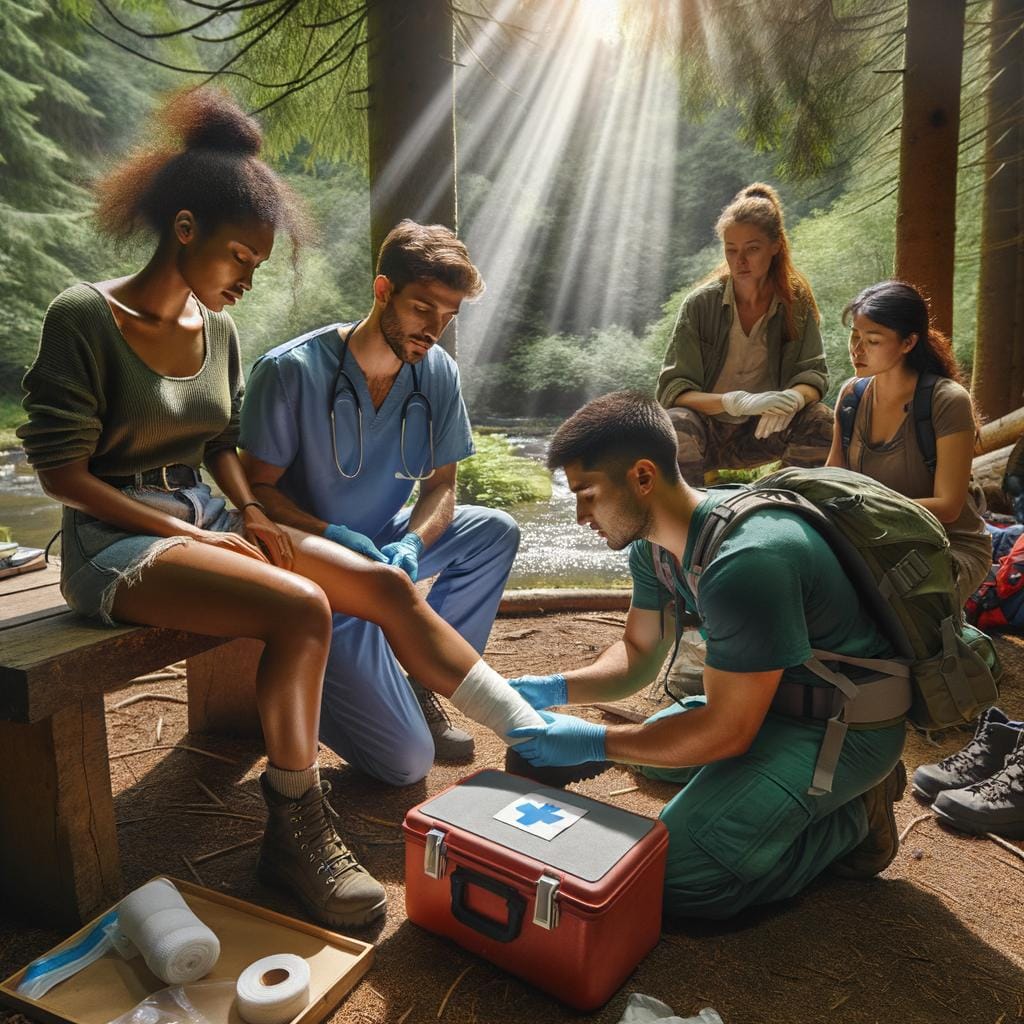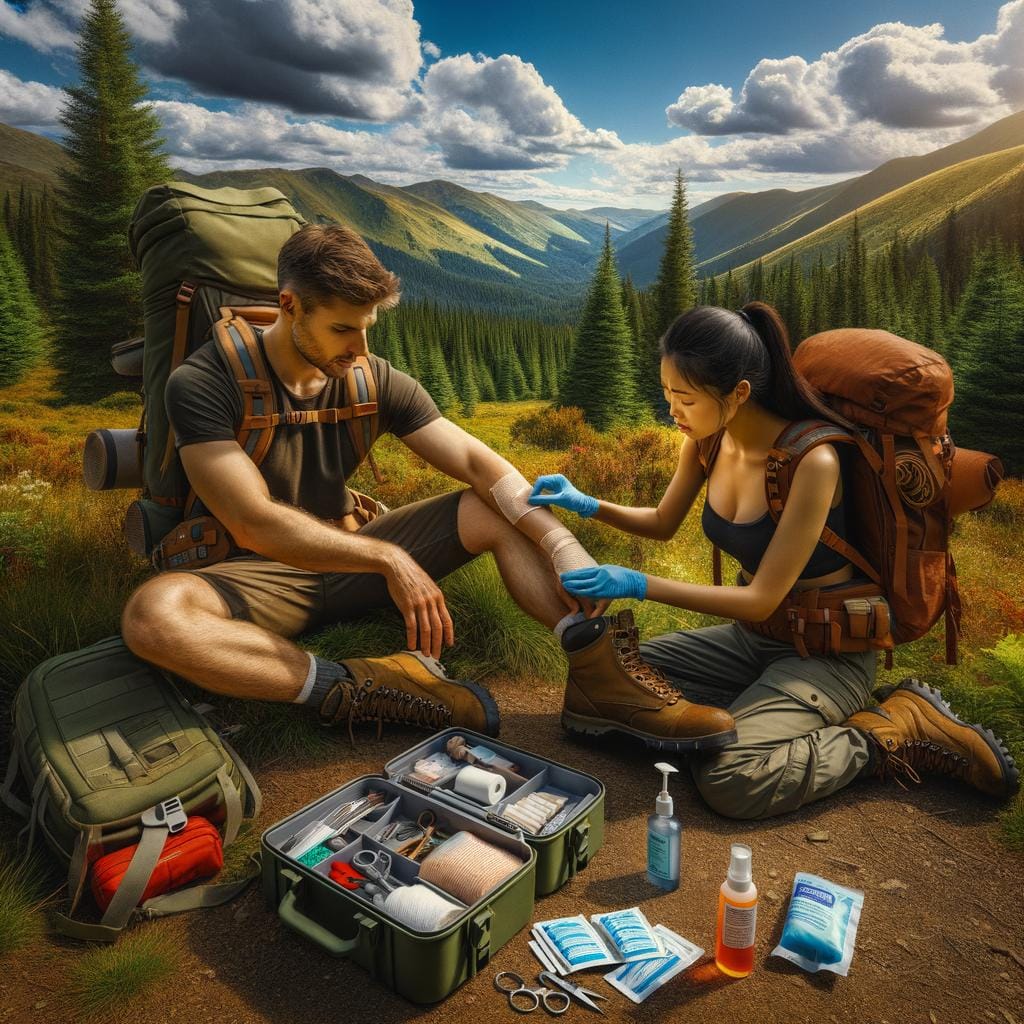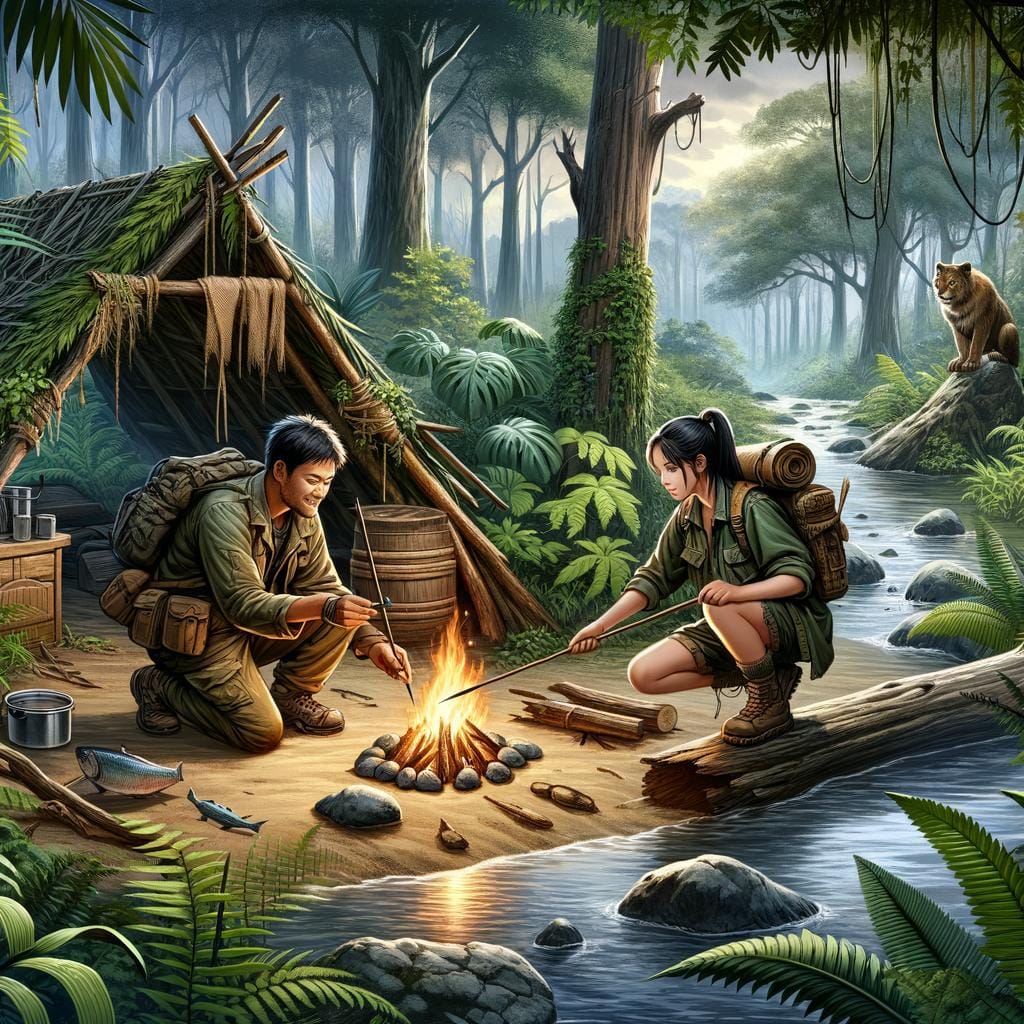In the vast and unpredictable wilderness, having knowledge of wilderness first aid can mean the difference between life and death. Whether you are an avid hiker, camper, or outdoor enthusiast, being equipped with basic first aid skills tailored for remote settings is crucial. In this comprehensive guide, we will delve into the world of wilderness first aid, exploring its importance, essential skills, common injuries in the wild, and how to best prepare for emergencies in nature.
Wilderness first aid involves addressing medical emergencies in remote locations where professional help may be hours away. The ability to provide immediate care during a crisis can make a significant impact on the outcome of an injury or illness. With proper training and preparation, individuals can confidently navigate through challenging situations when medical assistance is not readily available.
Throughout this article, we will discuss the significance of obtaining wilderness first aid training to ensure your safety and that of others during outdoor adventures. From basic first aid techniques to creating a customized wilderness first aid kit, we aim to empower readers with valuable information on how to handle emergencies effectively while exploring the great outdoors.
Join us as we embark on a journey through essential wilderness first aid practices and real-life scenarios that highlight the importance of being prepared for any situation in nature.
Importance of Wilderness First Aid Training
Wilderness first aid training is a crucial skill set for anyone venturing into the great outdoors. While traditional first aid techniques are essential, wilderness first aid goes beyond the basics to address the unique challenges and risks that come with remote and rugged environments. In these settings, professional medical help may be far away, making it vital for individuals to be prepared to handle emergencies on their own.
One of the key reasons why wilderness first aid training is so important is that it equips individuals with the knowledge and skills to assess situations accurately and respond effectively. Unlike urban environments where help is readily available, in the wilderness, quick thinking and appropriate actions can make all the difference between life and death. With proper training, individuals can learn how to stabilize a patient, manage injuries in unpredictable conditions, and determine when evacuation is necessary.
Moreover, wilderness first aid training instills confidence in individuals to handle emergencies calmly and efficiently. Whether it’s treating cuts and bruises or dealing with more serious issues like fractures or hypothermia, having the skills to provide immediate care can prevent a situation from escalating. By being prepared with wilderness first aid skills, outdoor enthusiasts can enjoy their adventures with peace of mind knowing they are equipped to handle whatever challenges come their way.
| Benefits of Wilderness First Aid Training | Details |
|---|---|
| Enhanced Preparedness | Individuals are better prepared to handle emergencies in remote settings. |
| Confidence Building | Training instills confidence in managing various injuries or health issues outdoors. |
| Life-Saving Skills | Ability to provide immediate care helps prevent situations from worsening. |
Basic First Aid Skills for Wilderness Settings
When venturing into the wilderness, it is crucial to have basic first aid skills to respond effectively to emergencies that may arise. In remote areas, professional medical help may not be readily available, making it essential for outdoor enthusiasts to be prepared with the knowledge and skills to handle injuries and illnesses. Understanding how to provide first aid in wilderness settings can make a significant difference in the outcome of an emergency situation.
Assessment and Stabilization
One of the key basic first aid skills for wilderness settings is the ability to assess a situation quickly and prioritize treatment based on the severity of injuries. In an emergency, individuals should stabilize the injured person by addressing any life-threatening conditions first, such as controlling severe bleeding or ensuring a clear airway. Basic assessment techniques, such as checking for responsiveness and breathing, are important skills to have when providing first aid in remote locations.
Wound Care and Bandaging
Another essential skill for wilderness first aid is proper wound care and bandaging. In outdoor environments, individuals are exposed to potential risks of cuts, scrapes, and puncture wounds from activities such as hiking or camping. Knowing how to clean a wound, apply appropriate dressings, and secure it with bandages can prevent infection and promote healing. Wilderness first aid training often includes hands-on practice in managing different types of wounds using improvised materials when necessary.
Immobilization and Splinting
In cases of musculoskeletal injuries, such as sprains or fractures, immobilization plays a critical role in preventing further damage and reducing pain. Learning how to effectively splint an injured limb using available resources in the wilderness can help stabilize fractures until professional medical help can be obtained. Wilderness first aid courses typically cover techniques for creating splints from materials like branches or trekking poles while considering factors such as comfort and circulation for the injured individual.
By acquiring basic first aid skills tailored to wilderness settings through training and practice, outdoor enthusiasts can enhance their preparedness for emergencies during adventures in remote areas. Whether it’s assessing injuries promptly, providing proper wound care, or immobilizing fractures with improvised splints, having these essential skills can make a significant impact on ensuring safety and well-being in outdoor environments where access to medical assistance is limited.
Common Wilderness Injuries and How to Treat Them
When venturing into the great outdoors, the risk of encountering injuries is always present. It is crucial for outdoor enthusiasts to be well-prepared with the knowledge and skills to handle common wilderness injuries effectively. One of the key aspects of wilderness first aid is understanding how to assess and treat these injuries in remote locations where medical help may not be readily available.
Some of the most common wilderness injuries include cuts, scrapes, sprains, burns, insect bites, and hypothermia. Knowing how to properly clean and dress wounds, stabilize sprains or fractures, treat burns with cool water, apply insect bite relief ointments, and prevent/treat hypothermia are all essential skills for anyone spending time in the wilderness. Wilderness first aid training equips individuals with the necessary knowledge to handle these situations confidently.
It is important to note that proper wound care and infection prevention are crucial when dealing with cuts and scrapes in outdoor settings. Cleaning wounds thoroughly with antiseptic wipes, applying antibiotic ointment, and covering them with sterile dressings can help prevent infections.
Understanding how to improvise materials in case standard first aid supplies are not available is also a valuable skill taught in wilderness first aid courses. Being prepared with these skills can make a significant difference in ensuring a positive outcome when faced with common wilderness injuries.
| Wilderness Injury | Treatment |
|---|---|
| Cuts/Scrapes | Clean wound with antiseptic wipes, apply antibiotic ointment and cover with sterile dressing. |
| Sprains/Fractures | Stabilize the injured area using splints or wraps; R.I.C.E method: rest, ice, compression, elevation. |
Essential First Aid Supplies for Outdoor Adventures
When heading out into the wilderness, it is essential to be prepared with the right first aid supplies to handle any potential emergencies that may arise. Whether you are hiking, camping, or engaging in any outdoor adventure, having the necessary tools can make a significant difference in providing timely care. Here are some of the essential first aid supplies that you should consider including in your wilderness first aid kit:
- Adhesive bandages of various sizes to dress minor cuts and scrapes
- Gauze pads and adhesive tape for larger wound dressing
- Tweezers for removing splinters or ticks
- Antiseptic wipes or alcohol pads for cleaning wounds
- Sterile gloves to protect both the caregiver and the patient
- Sam splint or triangular bandages for stabilizing fractures or sprains
- Pain relievers like ibuprofen or acetaminophen
In addition to these basic supplies, it is also important to pack items like a CPR mask, emergency blanket, flashlight with extra batteries, and a whistle for signaling for help in case of emergencies. These supplies can help you manage various injuries and medical conditions until professional help arrives. Remember to periodically check your first aid kit’s contents and ensure that everything is in good condition and not expired.
Being well-equipped with essential first aid supplies can give you peace of mind during your outdoor adventures and empower you to provide immediate care when needed. Familiarize yourself with how each item in your kit is used so that you can respond effectively in emergency situations. Preparedness is key when it comes to wilderness first aid, as it can mean the difference between a minor mishap and a serious injury turning into a life-threatening situation.
How to Create a Wilderness First Aid Kit
When venturing into the wilderness, it is essential to be prepared for any unforeseen medical emergencies that may arise. One of the most important steps in being prepared is creating a wilderness first aid kit. This kit should contain essential supplies to address common injuries and illnesses that can occur in outdoor settings. Here are some key items to consider including in your wilderness first aid kit:
- Adhesive bandages of various sizes to cover minor cuts and scrapes
- Gauze pads and adhesive tape for larger wounds
- Antiseptic wipes or alcohol pads to clean wounds before dressing them
- Tweezers for removing splinters or ticks
- Moleskin or blister pads to prevent and treat blisters
- Triangular bandage for creating slings or stabilizing fractures
- Instant cold packs to reduce swelling and alleviate pain
In addition to these basic supplies, it is important to pack medications for common issues such as allergies, pain, and upset stomach. It is also advisable to include a CPR face shield, a pencil (for recording notes), and a small notepad with basic first aid instructions. Remember that when creating a wilderness first aid kit, it is crucial to personalize it based on your specific needs, group size, location, and duration of your outdoor adventure.
Additional Tips for Building a Wilderness First Aid Kit
- Consider adding emergency contact information and any relevant medical history cards.
- Pack extra medication if you have a pre-existing condition that requires regular treatment.
- Check the expiration dates of all supplies regularly and replace any expired items immediately.
By taking the time to create a well-stocked wilderness first aid kit tailored to your needs, you can have peace of mind knowing that you are prepared to handle medical emergencies while exploring the great outdoors. Being equipped with the right tools can make all the difference in ensuring a safe and enjoyable outdoor experience.
Case Studies of Real-Life Wilderness First Aid Scenarios
Scenario 1: Hiking Injury
Imagine you and your friends are out on a hike in a remote wilderness area when one of your companions trips and falls, injuring their ankle. In this scenario, knowing wilderness first aid skills can be crucial. The first step is to assess the situation and ensure the safety of the injured person and yourself. Remember the acronym “STOP” – Stop, Think, Observe, Plan.
After assessing the injury, it is important to provide first aid treatment such as stabilizing the ankle using improvised splints or bandages from your first aid kit. Elevating the injured limb and applying ice (if available) can help reduce swelling and pain. If necessary, carefully assist the injured person to a safe location for further evaluation and potential evacuation.
Scenario 2: Bites or Stings
Encounters with insects or animals in the wilderness can lead to bites or stings that require immediate attention. For example, a bee sting or snake bite can cause severe reactions if not treated promptly. In such cases, it is important to remain calm and quickly act according to your wilderness first aid training.
If someone in your group gets bitten or stung, gently remove any stingers or venom sacs if present. Clean the affected area with antiseptic wipes from your first aid kit. Monitor for signs of allergic reactions such as difficulty breathing or swelling of the face and seek medical help if needed. Being prepared with knowledge on how to handle these situations can make a significant difference in the outcome for the victim.
Scenario 3: Heat Exhaustion
During a summer camping trip, one of your friends starts feeling dizzy, nauseous, and weak – signs indicating heat exhaustion. In this scenario, it is critical to act quickly to prevent escalation into heat stroke which can be life-threatening. Move the person into a shaded area and cool them down by removing excess clothing and applying cool compresses. Encourage them to drink water slowly to rehydrate.
Understanding how to recognize and manage heat-related illnesses like heat exhaustion is essential for anyone venturing into outdoor activities, especially in hot climates. By having wilderness first aid skills under your belt, you can effectively respond to emergencies like this one and ensure timely care for those in need.
Wilderness First Aid Certification and Courses Available
Obtaining a wilderness first aid certification is essential for anyone planning to spend time in the great outdoors. These specialized courses are designed to equip individuals with the knowledge and skills needed to handle medical emergencies in remote wilderness settings where professional help may not be readily available. Wilderness first aid training goes beyond basic first aid techniques, teaching participants how to assess and stabilize patients in challenging environments.
There are several organizations that offer wilderness first aid certification courses, including the American Red Cross, National Outdoor Leadership School (NOLS), and Wilderness Medical Associates. These courses typically cover topics such as patient assessment, wound care, treating hypothermia and heat-related illnesses, splinting fractures, managing allergic reactions, and improvising medical equipment in the wilderness. Participants also learn how to effectively communicate with rescue teams and make informed decisions during emergencies.
In addition to traditional classroom-based courses, there are online options available for obtaining wilderness first aid certification. These online courses provide flexibility for individuals who may not have access to in-person training or prefer to learn at their own pace.
However, it is important to ensure that any online course meets certification requirements set by reputable organizations to ensure you are receiving quality instruction. A wilderness first aid certification not only enhances your outdoor safety skills but also instills confidence in knowing how to respond effectively in emergency situations when help is hours away.
Conclusion
In conclusion, having the necessary wilderness first aid skills is essential for anyone venturing into outdoor environments. Whether you are a seasoned hiker, an avid camper, or simply enjoy exploring nature, being prepared for emergencies can make all the difference in ensuring a safe and enjoyable experience. Wilderness first aid training equips individuals with the knowledge and confidence to handle potential injuries and emergencies that may arise in remote locations where professional medical help may be hours away.
By understanding basic first aid skills tailored to wilderness settings, such as treating wounds, fractures, hypothermia, and dehydration, outdoor enthusiasts can be better prepared to respond effectively to unexpected situations. Additionally, knowing how to identify common wilderness injuries and administer appropriate treatment can greatly improve the outcome for those in need of immediate care.
Furthermore, assembling a well-stocked wilderness first aid kit tailored to your specific outdoor activities is crucial in providing timely assistance when faced with an emergency situation.
Ultimately, obtaining wilderness first aid certification through accredited courses ensures that individuals have the necessary expertise to handle challenging scenarios in remote locations effectively. By investing in this training and preparation, outdoor enthusiasts not only protect themselves but also contribute to promoting safety within their community of fellow adventurers. Remember, being prepared with wilderness first aid skills could mean the difference between a minor mishap and a life-threatening emergency when exploring the great outdoors.
Frequently Asked Questions
Is Wilderness First Aid Worth It?
Wilderness First Aid is definitely worth it for anyone who spends time outdoors, whether for work or recreation. It provides invaluable knowledge and skills for handling medical emergencies in remote locations where professional help may be delayed or unavailable.
Is Wilderness First Aid the Same as First Aid?
While Wilderness First Aid and regular First Aid share some similarities, they are not the same. Wilderness First Aid specifically focuses on providing medical care in environments where access to professional help is limited, requiring additional skills and resources than traditional first aid.
What Is the Difference Between WFR and WFA?
The main difference between Wilderness First Responder (WFR) and Wilderness First Aid (WFA) lies in the depth and scope of training. WFR courses are typically longer and more comprehensive, covering advanced medical techniques and treatments, making them suitable for professionals or those who spend extended periods in remote areas.
WFA courses are shorter and provide basic skills for managing common injuries and illnesses in wilderness settings, ideal for recreational outdoor enthusiasts looking to be prepared for emergencies.

An avid outdoor enthusiast, writer, and environmental advocate who has spent over two decades exploring the world’s most breathtaking landscapes. With a background in environmental science and a passion for adventure, Frances combines her love for nature with her talent for storytelling to inspire others to embark on their own outdoor journeys.





